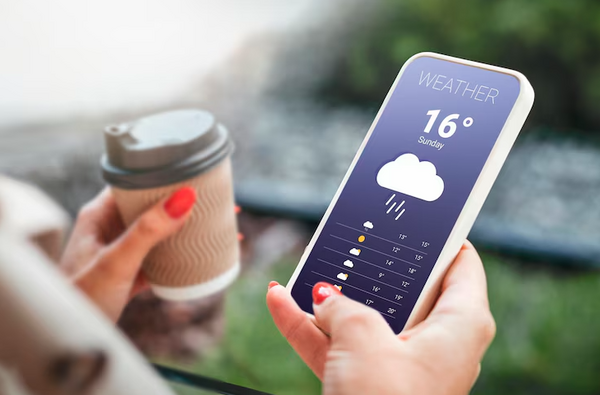Notifications
ALL BUSINESS
COMIDA
DIRECTORIES
ENTERTAINMENT
FINER THINGS
HEALTH
MARKETPLACE
MEMBER's ONLY
MONEY MATTER$
MOTIVATIONAL
NEWS & WEATHER
TECHNOLOGIA
TV NETWORKS
VIDEOS
VOTE USA 2026/2028
INVESTOR RELATIONS
COMING 2026 / 2027
ALL BUSINESS
COMIDA
DIRECTORIES
ENTERTAINMENT
FINER THINGS
HEALTH
MARKETPLACE
MEMBER's ONLY
MONEY MATTER$
MOTIVATIONAL
NEWS & WEATHER
TECHNOLOGIA
TV NETWORKS
VIDEOS
VOTE USA 2026/2028
INVESTOR RELATIONS
COMING 2026 / 2027
 Sameer Anthony -
August 21, 2024 -
Technology -
weatherstack api
-
646 views -
0 Comments -
0 Likes -
0 Reviews
Sameer Anthony -
August 21, 2024 -
Technology -
weatherstack api
-
646 views -
0 Comments -
0 Likes -
0 Reviews

Incorporating weather data into an application is a powerful way to enhance functionality, user experience, and decision-making processes. Whether you're building a travel app, managing logistics, or running an agriculture business, real-time weather data can provide invaluable insights. One of the most effective tools for integrating accurate weather data is the Weatherstack API. This blog will explore how to master the integration of weather data using the Weatherstack API, discussing its features, use cases, and the step-by-step process of implementation.
Weatherstack API is a robust and reliable service designed to deliver real-time and historical weather information. It provides access to a wide array of weather parameters such as temperature, humidity, wind speed, precipitation, and more. With its ease of use, scalability, and global coverage, Weatherstack API is a top choice for developers and businesses looking to integrate weather data into their platforms.
One of the primary advantages of the Weatherstack API is its simplicity. Even those with limited coding experience can integrate this API into their systems efficiently. Its comprehensive documentation offers detailed guidance, ensuring that users can harness its full potential.
To understand the full range of benefits, it is important to highlight the key features of the Weatherstack API:
There are several reasons why developers and businesses choose Weatherstack API for their weather data needs:
Weatherstack API can be applied across a wide variety of industries and use cases. Below are some examples of how real-time weather data can benefit different sectors:
Now that we’ve established the value of using Weatherstack API, let’s walk through the process of integrating it into your application.
The first step is to visit the Weatherstack website and create an account. Once registered, you will be provided with an API key. This key is essential for authenticating your requests to the Weatherstack server.
Weatherstack offers different pricing tiers. For small projects or testing purposes, you can start with the free tier. If your application requires more requests or advanced features such as historical data, you can upgrade to one of the paid plans.
Once you have your API key, you can start making requests to the Weatherstack API. Here's an example of how to retrieve real-time weather data for a specific location using Python:
import requests
API_KEY = 'your_api_key'
BASE_URL = 'http://api.weatherstack.com/current'
location = 'New York'
response = requests.get(f'{BASE_URL}?access_key={API_KEY}&query={location}')
data = response.json()
print(f"Weather in {location}: {data['current']['temperature']}°C")
This simple script fetches the current temperature in New York. You can expand the request to include other data such as wind speed, humidity, or precipitation.
You can tailor the data you retrieve by specifying parameters such as location, units (Celsius or Fahrenheit), or time range. This ensures you only receive the information that is most relevant to your application, minimizing unnecessary data and improving performance.
Once you have successfully integrated the API into your app, it’s important to thoroughly test it to ensure accuracy and reliability. Simulate different scenarios, such as changes in weather patterns or location searches, to ensure your application functions as expected.
To fully leverage the power of Weatherstack, consider these best practices:
Weather data integration can significantly enhance the value of applications across various industries, providing crucial information that helps users make better decisions. The Weatherstack API simplifies this process with its user-friendly interface, real-time updates, and scalability. By mastering its features, you can transform your application into a more powerful tool that responds dynamically to environmental conditions.
Incorporating real time weather data into your platform offers immense possibilities, from improving logistics to delivering personalized travel experiences. With the right approach, Weatherstack API allows you to seamlessly integrate this valuable data, ensuring your users have the most up-to-date and accurate information at their fingertips.
